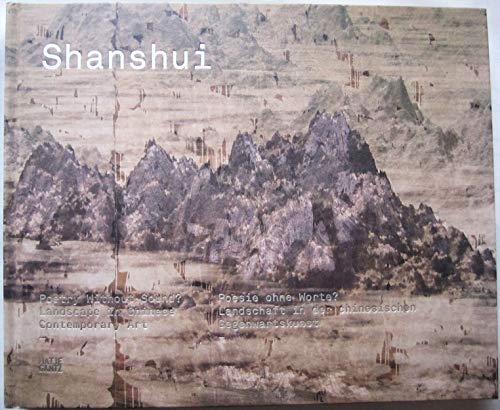britta erickson mingyuan uli sigg (3 résultats)
CommentairesFiltres de recherche
Type d'article
- Tous les types de produits
- Livres (3)
- Magazines & Périodiques (Aucun autre résultat ne correspond à ces critères)
- Bandes dessinées (Aucun autre résultat ne correspond à ces critères)
- Partitions de musique (Aucun autre résultat ne correspond à ces critères)
- Art, Affiches et Gravures (Aucun autre résultat ne correspond à ces critères)
- Photographies (Aucun autre résultat ne correspond à ces critères)
- Cartes (Aucun autre résultat ne correspond à ces critères)
- Manuscrits & Papiers anciens (Aucun autre résultat ne correspond à ces critères)
Etat En savoir plus
- Neuf (Aucun autre résultat ne correspond à ces critères)
- Comme neuf, Très bon ou Bon (3)
- Assez bon ou satisfaisant (Aucun autre résultat ne correspond à ces critères)
- Moyen ou mauvais (Aucun autre résultat ne correspond à ces critères)
- Conformément à la description (Aucun autre résultat ne correspond à ces critères)
Reliure
- Toutes
- Couverture rigide (3)
- Couverture souple (Aucun autre résultat ne correspond à ces critères)
Particularités
- Ed. originale (2)
- Signé (Aucun autre résultat ne correspond à ces critères)
- Jaquette (1)
- Avec images (Aucun autre résultat ne correspond à ces critères)
- Sans impressions à la demande (3)
Langue (2)
Prix
- Tous les prix
- Moins de EUR 20 (Aucun autre résultat ne correspond à ces critères)
- EUR 20 à EUR 45
- Plus de EUR 45
Livraison gratuite
- Livraison gratuite à destination de Etats-Unis (Aucun autre résultat ne correspond à ces critères)
Pays
Evaluation du vendeur
-
EUR 53
Autre deviseEUR 9 expédition depuis France vers Etats-UnisQuantité disponible : 1 disponible(s)
Ajouter au panierEtat : like new. Envoi avec suivi, rapide et soigné. Vendeur Pro specialiste livre depuis plus de 10 ans, produit en stock, expédié en 24 heures depuis la France, emballage soigné sous bulles (pour les envois de plus de 6 euros).
-
Shanshui: Landscape in Contemporary Chinese Art (Contemporary Works from the Sigg Collection / Zeitgenossische Werke Aus Der Sammlung Sigg)
Vendeur : Acadia Art & Rare Books. Est. 1931, Toronto, ON, Canada
Edition originale
EUR 66,12
Autre deviseEUR 5,11 expédition depuis Canada vers Etats-UnisQuantité disponible : 1 disponible(s)
Ajouter au panierHardcover. Etat : Near Fine. 1st Edition. Hardcover with illustrated boards and gilt-stamped lettering. Illustrated throughout, primarily in colour, featuring some full-page images. Text in English and German. Light pencil marks to some pages. Otherwise clean, unmarked, and square. Oblong 4to.
-
Shanshui: Poesie ohne Worte / Landscape in modern chinese art / Landschaft in der chinesischen Gegenwartskunst (German/English)
Edité par Hatje Cantz, Stuttgart, 2011
ISBN 10 : 377572849X ISBN 13 : 9783775728492
Langue: multilingue
Vendeur : Antiquariat UEBUE, Zürich, Suisse
Edition originale
EUR 38,55
Autre deviseEUR 14,50 expédition depuis Suisse vers Etats-UnisQuantité disponible : 1 disponible(s)
Ajouter au panierHardcover. Etat : Sehr gut. Etat de la jaquette : Sehr gut. 1. Auflage. Z : 240 Seiten/pp., 151 illustrations - Shanshui, the Chinese word for landscape, is a compound of the two symbols for mountain and water, indispensable elements of historical shanshui painting. Its significance lies more in its transformational potential for connecting the individual to the world than in the accurate rendering of a particular landscape. Even in contemporary art in China, which is dominated by the human figure and supposedly liberated from the burden of tradition, there are more or less obvious elements of traditional mountain-water painting, which is deeply rooted in the nation s culture. This publication was conceived in collaboration with Ai Weiwei probably China s best-known contemporary artist and it strikes an arc from selected historical shanshui paintings to important protagonists of contemporary Chinese art. The volume groups the works according to specific characteristics, such as the manipulation of traditional source materials and philosophical concepts, experiments with new media, or photography as a mode of expression essentially related to the one brushstroke propagated by Shi Tao, the seventeenth-century Chinese master.


